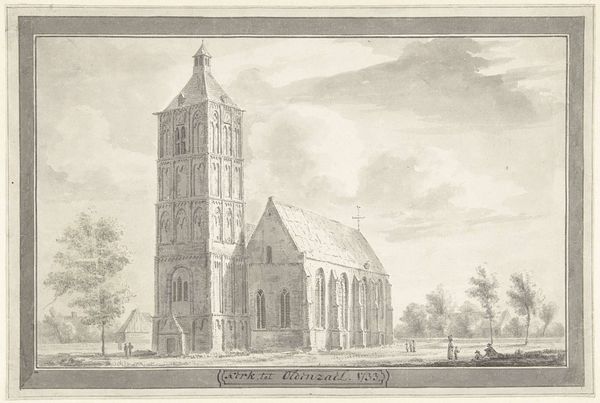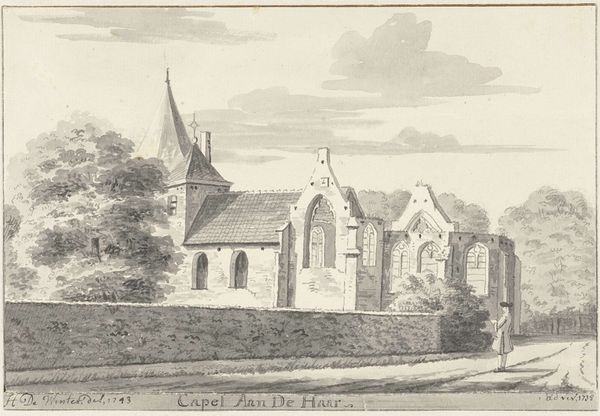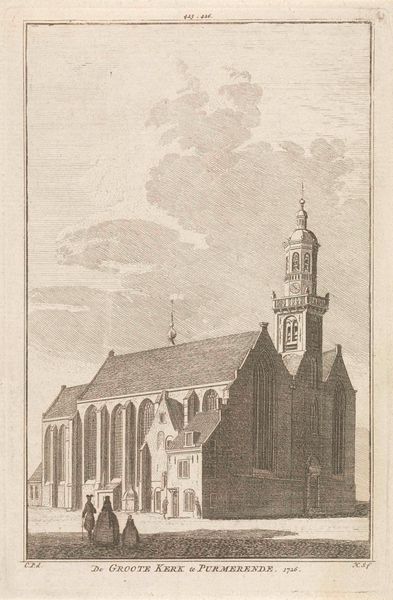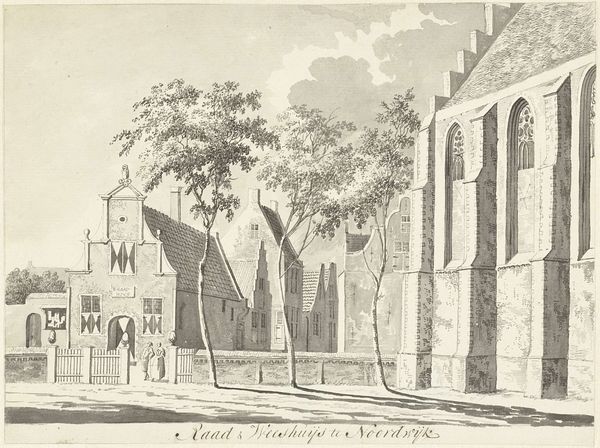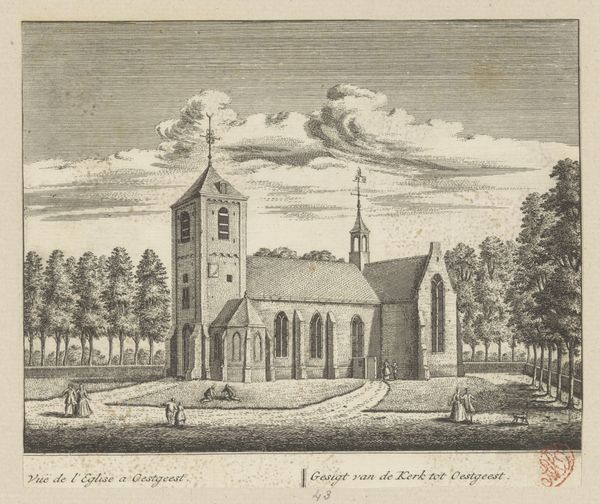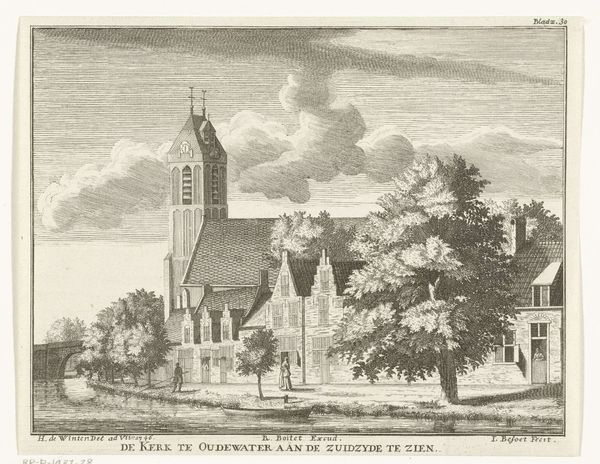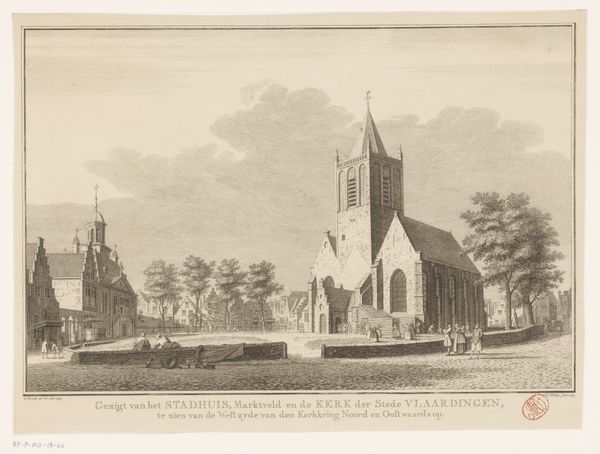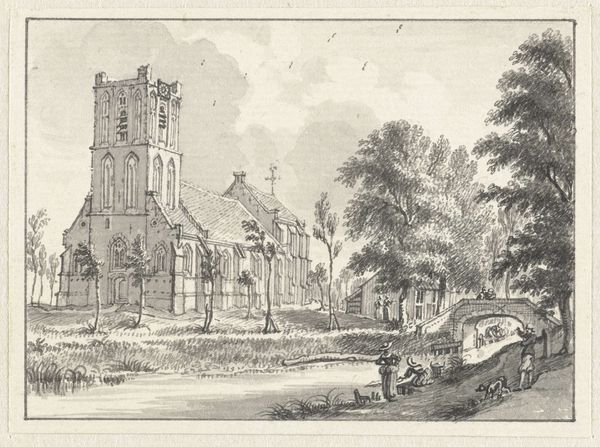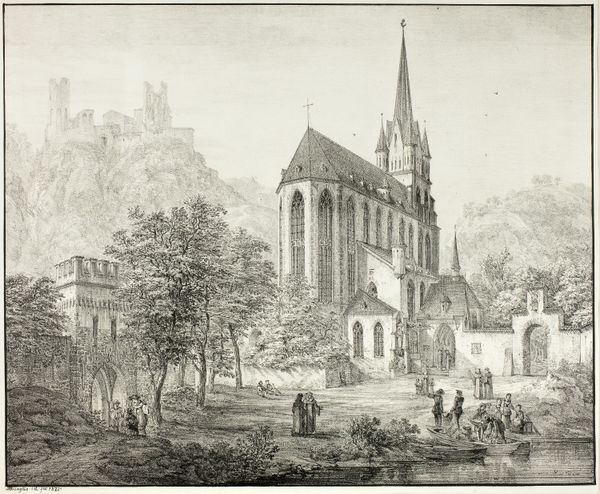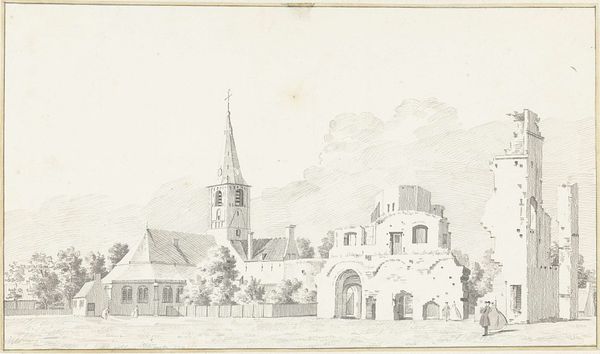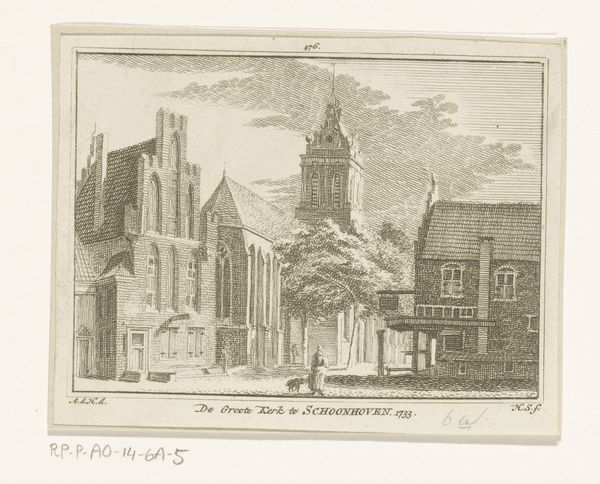
drawing, print, etching, paper, engraving, architecture
#
drawing
# print
#
etching
#
pencil sketch
#
old engraving style
#
landscape
#
paper
#
line
#
cityscape
#
engraving
#
architecture
#
realism
Dimensions: height 84 mm, width 110 mm
Copyright: Rijks Museum: Open Domain
Hendrik Spilman made this etching of the church at Warmond in the Netherlands sometime in the 1700s. This image is an interesting example of the intersection between religion, civic life, and artistic production in the Dutch Republic. At the time Spilman made this print, the Dutch Republic was in a period of economic decline, and the established church was a powerful force in maintaining social order. The image presents the church as a stable, enduring institution at the center of community life. The meticulous detail suggests the value placed on accuracy and documentation in Dutch printmaking, which catered to a market interested in topographical views. To truly understand this work, we might investigate the archives of the church itself, local histories of Warmond, and collections of prints from this period. By studying the institutional and social context, we can better understand the values and beliefs that shaped its creation.
Comments
No comments
Be the first to comment and join the conversation on the ultimate creative platform.
